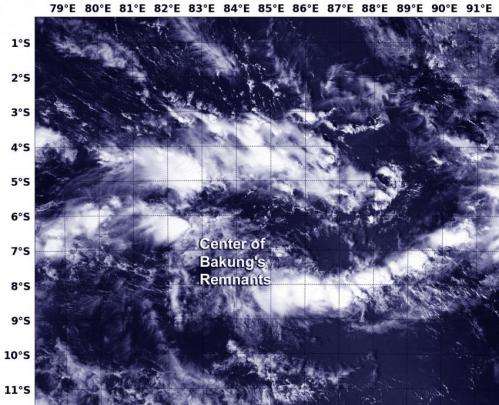Suomi NPP satellite watching Cyclone Bakung's remnants

The remnants of Tropical Cyclone Bakung continue to linger in the Southern Indian Ocean, and NOAA-NASA's Suomi NPP (Suomi NPP) satellite is one satellite keeping an eye on the storm for possible re-development.
On Dec. 16, the remnant low pressure area formerly known as Bakung was centered near 7.4 south longitude and 83.8 east latitude. That's about 670 nautical miles (771 miles/1,241 km) east of the coral atoll known as Diego Garcia. The atoll is part of the British Indian Ocean Territory.
At 07:31 UTC (2:31 a.m. EST) NOAA-NASA's Suomi NPP satellite passed over Bakung's remnants and the Visible Infrared Imaging Radiometer Suite (VIIRS) instrument aboard captured a visible picture of the storm. The VIIRS instrument revealed fragmented thunderstorms southeast and northwest of the ill-defined and elongated low-level center of circulation.
Suomi NPP's job is to collect environmental observations of atmosphere, ocean and land for both NOAA's weather and oceanography operational missions and NASA's research mission to continue the long-term climate record to better understand the Earth's climate and long-term trends.
The Joint Typhoon Warning Center (JTWC) noted that surface winds are estimated between 20 and 25 knots (23.0 and 28.7 mph/37.0 and 46.3 kph, and sea level pressure is near 1007 millibars. JTWC gives this low pressure area a low chance for development.
Provided by NASA's Goddard Space Flight Center





















